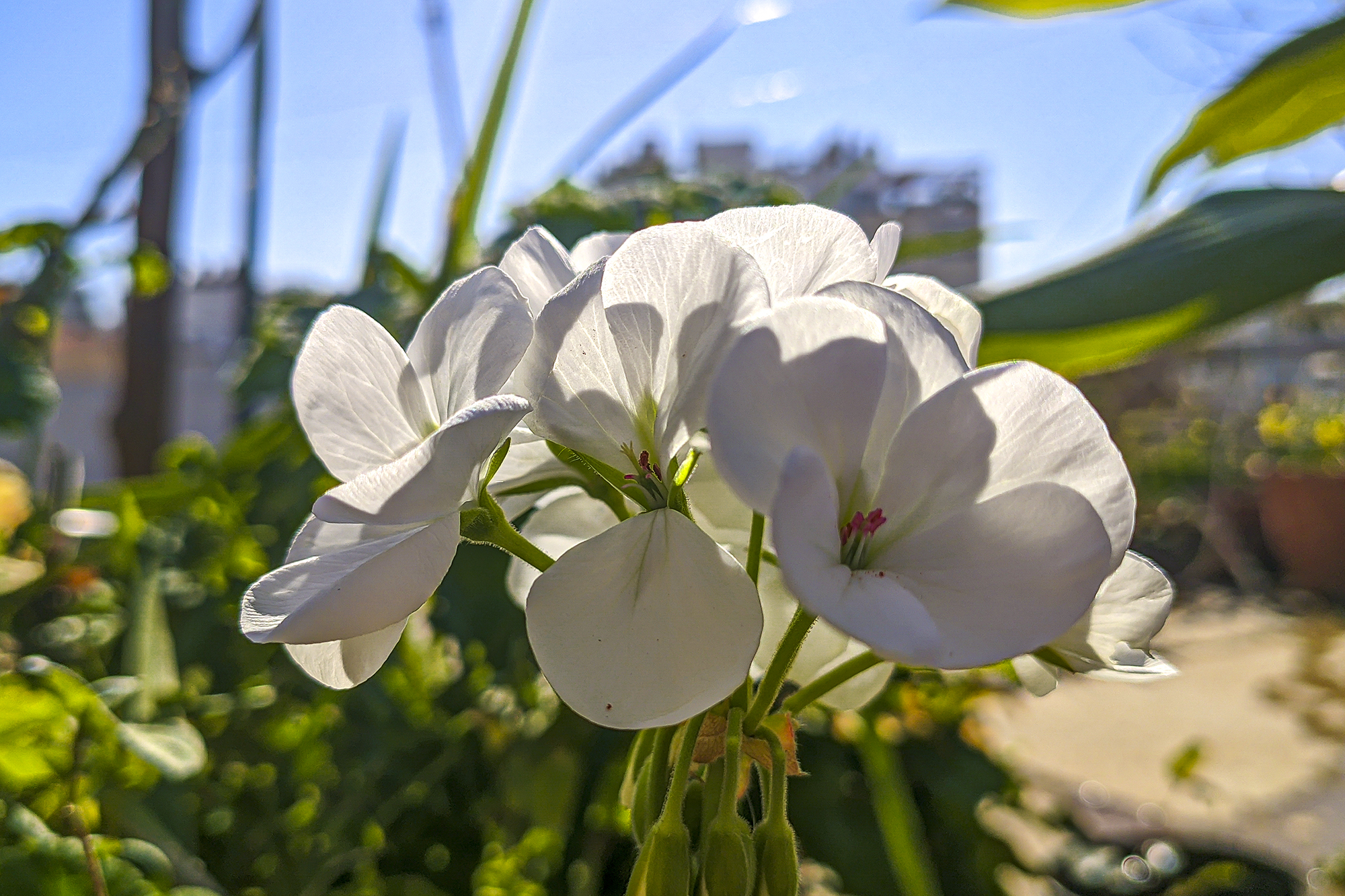Pelargonium zonale

Geranium, zonal geranium, zonal pelargonium, Γεράνι. Pelargonium zonale is an erect or scrambling shrub. It can reach a height of 3m but normally grows to about 1m. The young stems are hairy and succulent but become woody with age. The large leaves are often smooth, often with a characteristic dark horseshoe-shaped mark — hence its common name. The distinctly irregular flowers are borne in an umbel. Flowering occurs throughout the year but especially from September to November.
Growing Pelargonium zonale
Pelargonium zonale is an easy plant to grow, and does best in gardens where frost is not too severe. It requires semi-shade to full sun conditions. The plants should be pruned after flowering, and they respond very well to feeding with liquid organic fertilizers. They look very effective when used as the back-planting of a bed to form the main structure of the design. This species also grows well in containers.
It is usually propagated by means of tip or stem cuttings, or seed. The optimum time for taking cuttings is in autumn (March-May) and spring (September-November). Cuttings should be cut below a node and dipped into a suitable rooting hormone. The cuttings should then be placed in trays filled with coarse river sand. The medium should be pre-treated with a fungicide as a preventative measure against fungal attack. These cuttings should then be placed into cold frames for rooting. Seed can be sown in spring, summer or autumn.
Uses
Pelargonium zonale is a parent of many of the zonal pelargonium hybrids cultivated all over the world and is an integral part of any pelargonium breeding programme.
Classification
| Kingdom | Plantae |
| Phylum | Tracheophyta |
| Class | Magnoliopsida |
| Order | Geraniales |
| Family | Geraniaceae |
| Genus | Pelargonium |
| Species | Pelargonium zonale |









